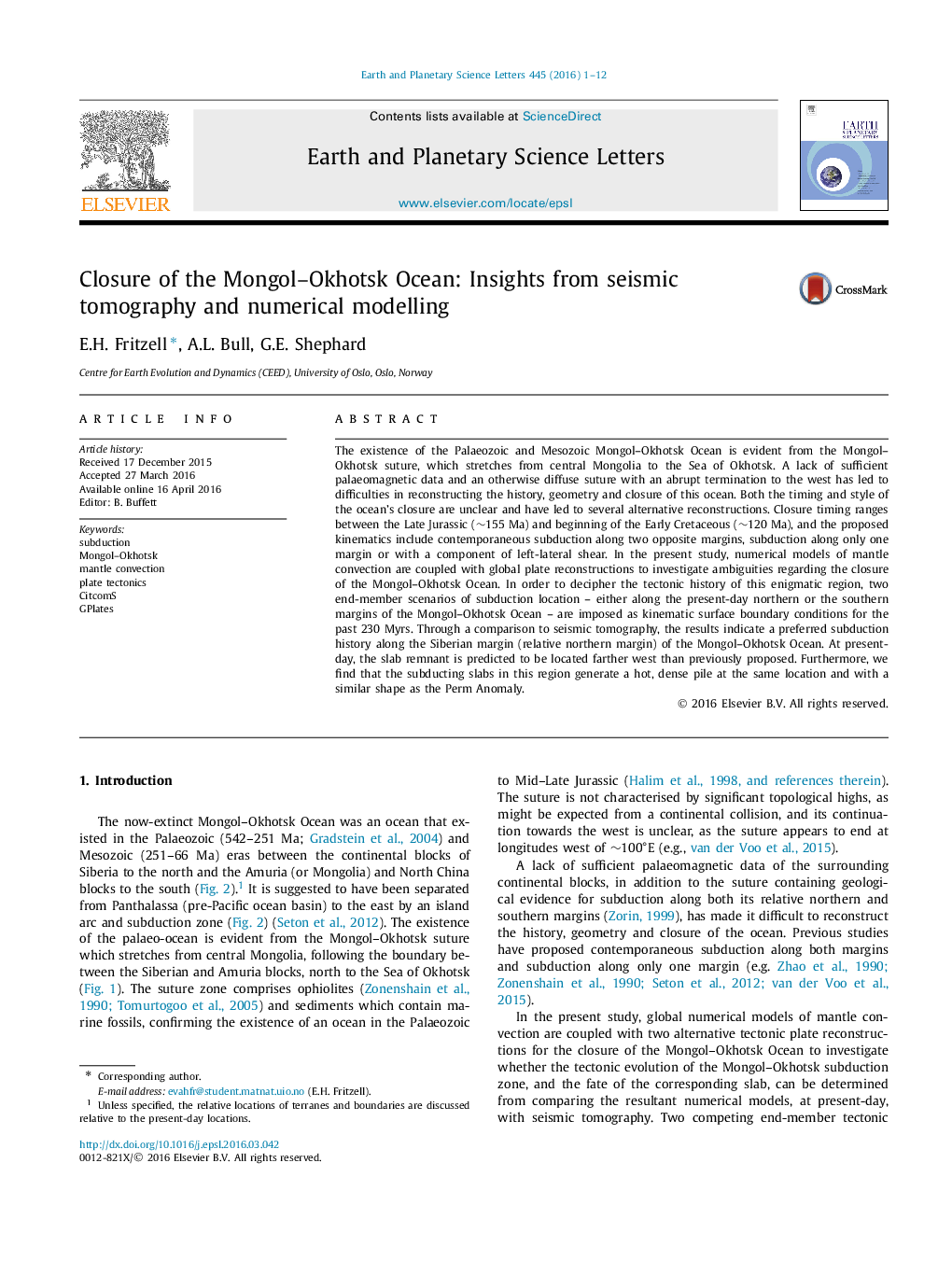| کد مقاله | کد نشریه | سال انتشار | مقاله انگلیسی | نسخه تمام متن |
|---|---|---|---|---|
| 6427322 | 1634711 | 2016 | 12 صفحه PDF | دانلود رایگان |
- Forward numerical models compared regional structure from seismic tomography.
- Present-day location of the Mongol-Okhotsk slab remnant found to be west of â¼40°E.
- Preferred subduction history was found to be along the Siberian margin.
The existence of the Palaeozoic and Mesozoic Mongol-Okhotsk Ocean is evident from the Mongol-Okhotsk suture, which stretches from central Mongolia to the Sea of Okhotsk. A lack of sufficient palaeomagnetic data and an otherwise diffuse suture with an abrupt termination to the west has led to difficulties in reconstructing the history, geometry and closure of this ocean. Both the timing and style of the ocean's closure are unclear and have led to several alternative reconstructions. Closure timing ranges between the Late Jurassic (â¼155 Ma) and beginning of the Early Cretaceous (â¼120 Ma), and the proposed kinematics include contemporaneous subduction along two opposite margins, subduction along only one margin or with a component of left-lateral shear. In the present study, numerical models of mantle convection are coupled with global plate reconstructions to investigate ambiguities regarding the closure of the Mongol-Okhotsk Ocean. In order to decipher the tectonic history of this enigmatic region, two end-member scenarios of subduction location - either along the present-day northern or the southern margins of the Mongol-Okhotsk Ocean - are imposed as kinematic surface boundary conditions for the past 230 Myrs. Through a comparison to seismic tomography, the results indicate a preferred subduction history along the Siberian margin (relative northern margin) of the Mongol-Okhotsk Ocean. At present-day, the slab remnant is predicted to be located farther west than previously proposed. Furthermore, we find that the subducting slabs in this region generate a hot, dense pile at the same location and with a similar shape as the Perm Anomaly.
Journal: Earth and Planetary Science Letters - Volume 445, 1 July 2016, Pages 1-12
